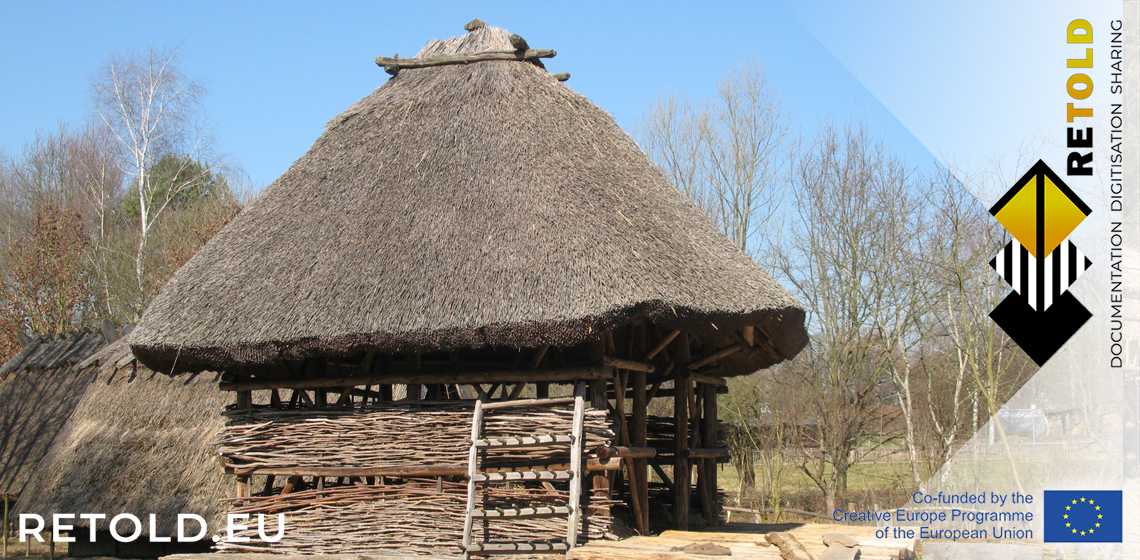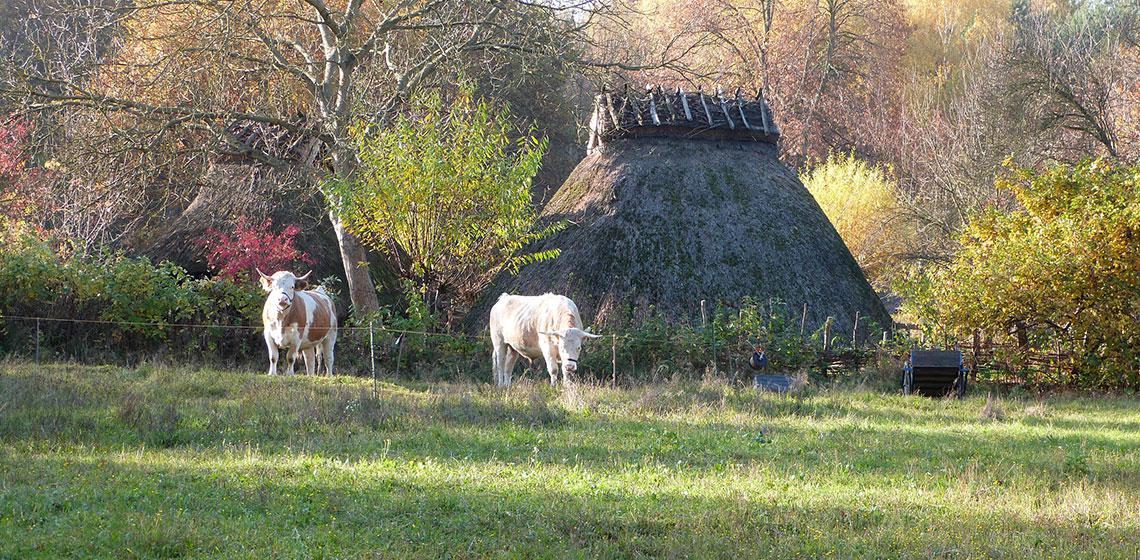The content is published under a Creative Commons Attribution Non-Commercial 4.0 License.
Unreviewed Mixed Matters Article:
RETOLD: Documenting House (Re)constructions – An Excerpt of European Approaches

As part of the EU project RETOLD, the Stadtmuseum Berlin in Germany is responsible for creating standardised documentation strategies for archaeological house models and evaluating them by engaging with the open-air museums of Astra in Romania and the Steinzeitpark Dithmarschen in Germany. In order to start creating these workflows, as a first step, other open-air museum were approached asking them to share their existing documentation forms and workflows, if any. Most open-air museums did not have existing workflows, confirming the need for this project in the first place. Of the 21 Museums approached, six did not reply, eight replied but had no standardised documentation forms and only seven did use regular documentation procedures and shared them with the project.
Open-air museums can be categorized into two broad categories; firstly, the ethnographic open-air museums, where translocated original buildings are preserved and curated, and secondly archaeological open-air museums, where houses are reconstructed based on archaeological evidence. For both types of museums, standardised documentation practices are useful, although the initial documentation will differ. Ethnographic open-air museums have had a more coordinated approach to documentation, as they are dealing with “originals”. As with any other museum object, great care is taken to record every detail, in the case of translocated houses, their original position and history as well as the transport to the museum site. After the house is positioned, the state of repair and deterioration is monitored and documented at regular intervals. Although the first part of the process will differ, a lot can be learned from ethnographic open-air museums for documenting archaeological house models.
Documenting in ethnographic open-air museums
Two ethnographic open-air museums shared their documentation strategies, the Freilichtmuseum der Schweiz in Switzerland and the Muzeul Civilizației Populare Tradiționale „ASTRA“ din Sibiu in Romania. Both museums use forms with similar input fields for documenting their houses, starting with the original context and location of the building, translocation, materials and construction as well as maintenance and restoration. In Romania, information on houses in ethnographic open-air museums is documented in a database created specifically for this purpose. This means, all ethnographic exhibits in Romanian museums can be accessed virtually through this link: ETNOMON - Muzeul virtual al monumentelor etnografice în aer liber din România (cimec.ro)
Documenting in archaeological open-air museums
In general, documentation strategies received from archaeological open-air museums begin with documenting the archaeological findings a house model is based on. This means that similar to the documentation procedure used in ethnographic open-air museums, the background information and context is collected and documented. Information both on the archaeological site, as well as on the detailed feature the house model is based on is collected. The important part in the documentation is the step from the evidence to the finished model. Most archaeological open-air museums sharing their forms, have this aspect prominently represented (Creighton 2020). Why was the model constructed the way it was? Why were the materials used? What considerations and reflections played a part in those decisions?
Although sharing these aspects, the forms for documenting archaeological house models from museums across Europe differed in their overall setup and scope. Some forms were designed to document the building process, other forms combined the building process with the possibility of adding repairs and maintenance over time and one form was specifically designed to document only regular maintenance and monitor decay.
During a seminar at the Institute for Prehistoric Archaeology at the Freie Universität Berlin with undergraduate students, a group of students brought to paper thoughts and considerations on the documentation of archaeological house models. With input from the author due to her experiences at the open-air museum Museumsdorf Düppel in Berlin, it was considered helpful to design different forms for different scopes of documentation (Lehnhardt and Solleder 2021). Three forms were proposed:
- for documenting the research and construction process up to the finished house model;
- for documenting already existing house models which have not been documented at all or not thoroughly enough;
- for documenting maintenance and decay at regular intervals.
The forms for documenting construction and existing houses should be completed by archaeologically trained staff, whilst the forms for documenting regular maintenance and decay should be designed in such a way, that they can be filled out by volunteers and/or staff with a variety of backgrounds. First versions of these forms will be tested during June and July 2021 at the Museumsdorf Düppel in cooperation with the society of volunteers.
At the last RETOLD Partner meeting, the idea was discussed, if a fourth form is necessary in order to document archaeological house models after they have been left to decay as long-term experiments. This idea will be followed up and tested. It might also be possible to use the form for documenting regular maintenance and decay for that purpose.
The main goal of designing user friendly forms, is the widespread take up of standardised documentation. It is therefore paramount to evaluate the forms in different museums, contexts, and countries. The EU project RETOLD makes this quite complex undertaking possible.
In the RETOLD project both partners are responsible for designing and testing documentation formats for house reconstructions and craft activities, trying to standardized working methods for documenting those.
Museumsdorf Düppel - Stiftung Stadtmuseum Berlin (DE)
The settlement in Düppel was discovered in 1939, buti t was only in 1967 that archaeologists from the Museum für Vor-und Frühgeschichte under Prof. Adriaan von Müller began excavating the site. The village was almost excavated to its full extent, which is why the idea was born to re-build the houses posthole by posthole. Today the reconstructed houses form a u-shaped village setup around a picturesque common. Read more
Complexul National Muzeal ASTRA (RO)
The ASTRA Open-Air Museum situated in the natural reservation of Dumbrava Sibiului, spreads across 96 ha, of which more than 40 ha are covered by the permanent exhibition. It was opened in 1963 when the assumed mission was to present the traditional technical patrimony in rural Romania, mills for grinding, oil, grapes and fruit presses, sawmills and watermills, and some peasant industries. Read more
Bibliography
Creighton, T., 2020. Approaches to the Documentation of Houses in Open-Air Museums, EXARC Journal, [e-journal] 2020/4, https://exarc.net/ark:/88735/10535.
Lehnhardt, E. and Solleder, S., 2021. Documentation Strategies at Butser Ancient Farm, EXARC Journal, [e-journal] 2021/1, https://exarc.net/ark:/88735/10560.



